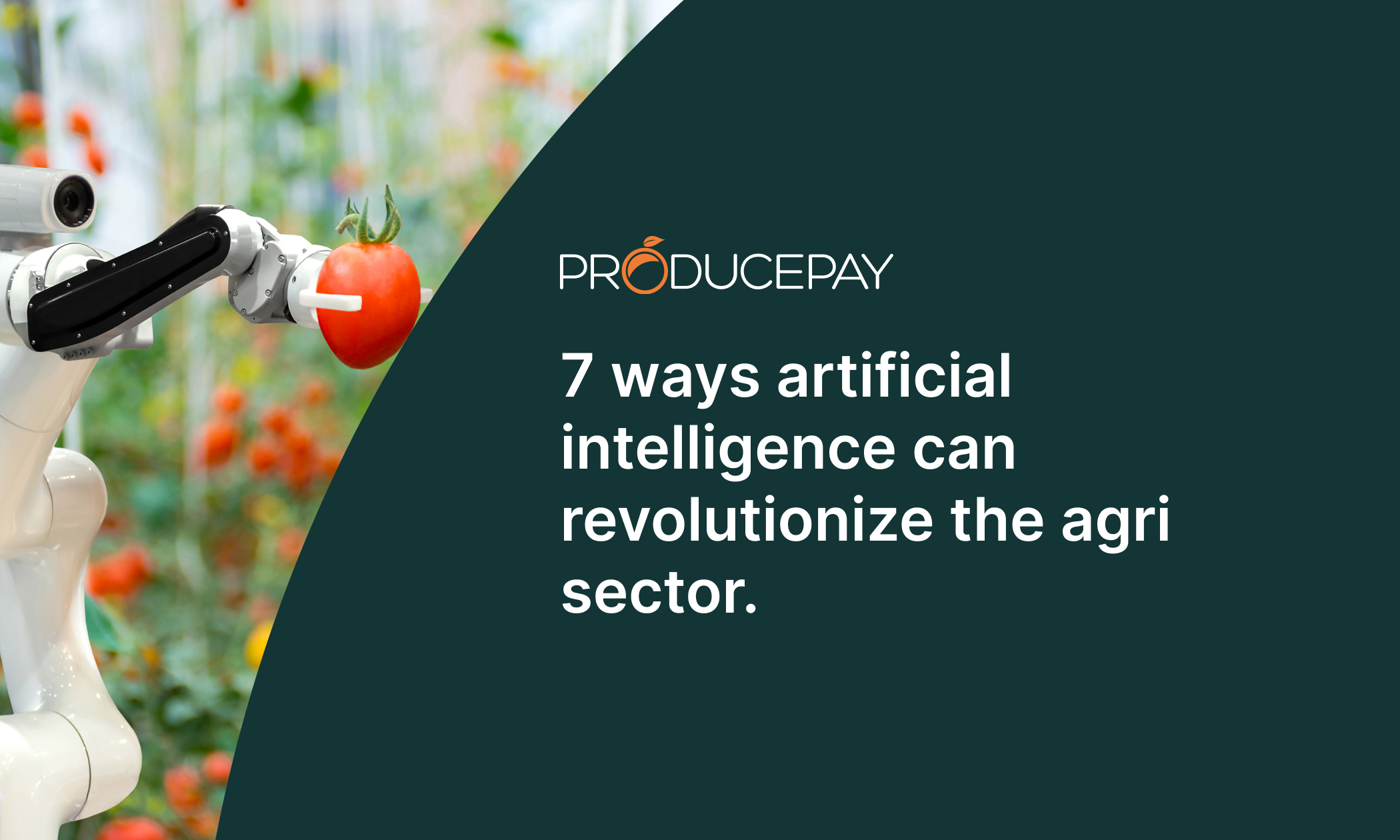
7 ways artificial intelligence can revolutionize the agri sector.
Advanced data collection and analysis is essential for improving production and profitability in the agricultural industry. That’s why data management tools powered by artificial intelligence (AI) are critical for reducing costs, increasing production, and improving product quality.
But to get the best use out of this technology, it’s essential to understand its practical applications, limitations and implementation challenges.
Why is data management important?
Artificial intelligence aims to simulate human intelligence and reasoning through computer programs. Combining computer science with a robust database of information makes it possible to anticipate problems and plan their solutions.
The agriculture industry generates vast volumes of data, which can be used to make informed decisions and improve operational efficiency. Effective data collection and analysis requires various technological tools such as sensors, satellites, drones, software, and apps.
When used correctly, these tools can provide guidance and insights to help manage and optimize operational decision-making.
However, it is important to note that AI tools are not limited to production. These technologies can be applied to all aspects of the agricultural business, including climate, trade, market price and volume fluctuations, administration, and accounting.
How does AI benefit the agricultural industry?
Here are 7 of the most valuable ways that artificial intelligence is revolutionizing the agriculture industry:
1. Production optimization
Specialized sensors can collect data on climate variables such as relative humidity, temperature, and evapotranspiration levels in plants and evaluate how these conditions affect them. After analyzing these results, growers can apply solutions to encourage the optimal development of crops and increase both yield and product quality.
2. Weather forecasting
AI can analyze weather information and help farmers anticipate changes or conditions they may need to prepare for. Weather AI can perform a broad range of services, including analysis of meteorological data, long-term weather forecasting (probability of droughts or floods), and real-time alerts.
3. Pest and disease detection
Using computer vision, AI can detect pests and diseases that damage crops. This technology can evaluate their characteristics, compare them to its extensive database, identify the specific problem and recommend a solution.
Imaging can be done on a large scale through satellites and drones or on a small scale with mobile applications that use a smartphone camera.
This detection technology is much more efficient than manual detection and can be customized to discover specific problems. In Colombia, AI tools are used to identify pests in avocados that are subject to export restrictions in the United States.
Another practical application is detecting plant diseases before their symptoms are visible to the human eye. This allows farmers to take preventive measures and treat diseases before they become a significant crop threat.
4. Water use optimization
AI can help optimize water use in agriculture in several ways. Weather forecasting allows farmers to anticipate rain or drought so they can adjust their irrigation plans, and avoid wasting water.
It can also monitor and analyze soil moisture data to predict the optimal time for watering. Finally, AI programs can maximize water use efficiency by controlling automated irrigation systems and determining the volume and duration of irrigation based on humidity, temperature, transpiration, and other factors.
5. Optimizing fertilizer and pesticide use
AI systems can work with robots, drones or autonomous vehicles to manage fertilizer application. Sensors can study soil conditions and apply more or less fertilizer depending on the crop’s needs. These programs can also regulate fertilizers that are applied through irrigation systems.
Efficiency in using fertilizers and pesticides can reduce costs for farmers and positively impact the environment. By minimizing the use of these chemicals, soil and water contamination can be reduced, and agricultural worker exposure can also be decreased.
6. Autonomous harvest
Combining AI with autonomous vehicles can optimize the harvest of agricultural products, from cereals to fruits.
These systems can harvest products precisely and efficiently, avoiding plant damage and minimizing food waste. Additionally, this technology can be instrumental in collecting delicate fruits and vegetables that require careful handling to preserve their quality.
As the agricultural automation industry advances, growers can expect greater adoption of AI in crop harvesting. This will improve the efficiency and profitability of agricultural operations and have a positive impact on the safety and well-being of agricultural workers.
7. Yield and quality forecast
AI can predict harvest yields by analyzing historical and current data on climate, soil, water use, and the amount and type of fertilizers used.
It can also use, satellite images to detect problems such as diseases, pests, or water stress in crops, predicting yield and quality based on plant health.
By anticipating the yield and quality of their production, farmers can decide how much and when to plant and plan optimal harvest times.
Challenges using artificial intelligence in agriculture
AI and data management tools are revolutionizing agriculture with their ability to improve efficiency, productivity and sustainability. However, their implementation in the sector also presents challenges that must be overcome.
- Need for accurate and reliable data. One of the main challenges of using AI in agriculture is the need for accurate and reliable data to achieve the best results. Therefore, staying up-to-date with advances in crop management and performance digitization is essential and will allow for obtaining more information and accurate data.
- Costly implementation. Another challenge to implementation is its high cost, especially when using the most advanced systems. This makes AI technology inaccessible to many producers. Solutions that facilitate access to technology, such as promoting public and private investment in research and developing more cost-effective and efficient technologies, are necessary.
- Need for experts. Implementing AI requires specialists from installation to supervision, which can challenge many farmers. Because this technology constantly evolves and requires specific technical knowledge, it is necessary to encourage the training and education of professionals in this field.
- Shortage of large databases. There are still insufficient databases in agriculture, making it challenging to create accurate prediction models. However, this also represents an opportunity for Big Data, which can contribute to data collection and the generation of better prediction models.
Sources: FAO, IBM, Anagan, Europarl, Portal Frutícola

